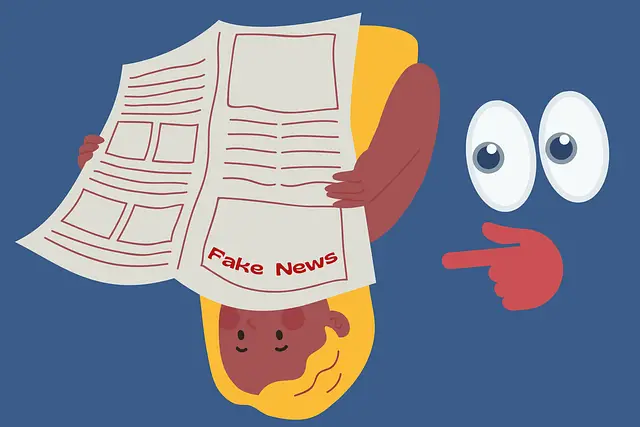Deception is a broader term encompassing various forms of misleading, while a lie specifically refers to a false statement or assertion.
Deception and lying are terms often used interchangeably, but they are not one and the same. It is essential to understand the difference between deception and lies to effectively communicate and make ethical decisions.
Deception involves intentionally misleading someone, while lying specifically refers to making false statements. When someone deceives, they manipulate information to create a false belief or perception. On the other hand, lying entails uttering falsehoods in order to deceive others.
To gain a clearer understanding of the intricacies involved, let’s delve deeper into the nature of deception and the act of lying. By exploring their motives, detecting signs, and considering the ethical implications, we can navigate complex communication situations with integrity and promote honesty in our interactions.
Key Takeaways:
- Deception and lying are distinct, with deception involving intentional misleading and lying specifically referring to making false statements.
- Understanding the motives behind deception and lying can help in identifying and addressing dishonesty.
- Detecting signs and cues of deception can enhance one’s ability to uncover dishonesty in communication.
- Deception and lying can have serious consequences, eroding trust and damaging relationships.
- Considering ethical implications and promoting honesty can lead to healthier relationships and trustworthy communities.
The Nature of Deception

Deception is a complex phenomenon that encompasses the intentional act of leading someone to believe something false or misleading. It delves into the intricate web of human psychology, where motives, strategies, and types of deception intertwine. By understanding the nature of deception, we can gain valuable insights into the intricacies of human behavior and the art of manipulation.
Psychology studies shed light on the multifaceted nature of deception, uncovering its various types and their underlying mechanisms. These types include omission, distortion, and fabrication. Omission involves leaving out important information to create a false perception, while distortion alters facts to misrepresent reality. Fabrication, on the other hand, involves creating completely false information to deceive others.
Types of Deception:
| Type | Description |
|---|---|
| Omission | Leaving out crucial information to deceive others |
| Distortion | Altering facts to misrepresent reality |
| Fabrication | Creating false information to deceive others |
Deception can be motivated by a desire for personal gain, protection, or manipulation. It can occur in various contexts, such as personal relationships, politics, advertising, and criminal activities. Recognizing the motives and strategies behind deception is essential for detecting and countering its effects.
The Act of Lying

Lying is the deliberate act of making false statements with the intention to deceive others. It involves the intentional distortion or misrepresentation of the truth. Understanding the characteristics and types of lies can provide valuable insights into the motives and consequences behind deceptive behavior.
Characteristics of Lying
- Deliberate falsehoods: Lies are purposefully crafted to mislead others.
- Intentional deception: Lying involves a conscious effort to deceive and manipulate.
- Misrepresentation of the truth: Lies distort the reality or present a false version of events.
Types of Lies
Various types of lies have been identified, each with its own characteristics:
| Type of Lie | Description |
|---|---|
| White lies | Small, harmless lies often told to protect someone’s feelings or maintain social harmony. |
| Bold-faced lies | Blatant and audacious lies that are told without hesitation or remorse. |
| Compulsive lying | A chronic pattern of lying without an apparent reason, often driven by a psychological compulsion. |
Recognizing and understanding the different forms of lying can enable individuals to better navigate situations involving deception, evaluate the motives behind dishonesty, and comprehend the potential consequences of such behavior.
Motives for Deception and Lying
Deception and lying are complex behaviors influenced by various motives and psychological factors. Understanding these underlying motives can provide insights into why individuals engage in deceptive practices.
Motives for Deception
Deception can be driven by a range of motives, including:
- Self-preservation: People may resort to deception in order to protect themselves from harm or negative consequences.
- Gaining advantage: Some individuals employ deceptive tactics to gain an unfair advantage over others or to achieve personal goals.
- Protecting others: In certain situations, deception may be driven by the desire to shield loved ones from harm or to maintain their well-being.
Motives for Lying
Lying, as a subset of deception, can be motivated by various factors:
- Fear: Fear of punishment or negative repercussions can lead individuals to lie in order to avoid facing the consequences of their actions.
- Self-interest: People may lie to protect their own self-image, maintain social standing, or achieve personal gain.
- Desire to avoid punishment: Lying can be a means to evade accountability and escape punishment for wrongdoing.
Psychological factors such as fear, self-interest, and the desire for self-preservation can significantly influence both deception and lying. By understanding these underlying motives, individuals can develop strategies to detect and address deceptive behavior.
Detecting Deception and Lies
Detecting deception and lies can be a challenging yet crucial skill for effective communication and decision-making. By understanding various techniques and methods used to detect deception, individuals can enhance their ability to identify dishonesty and maintain trust in personal and professional relationships.
Analyzing Non-Verbal Behaviors
Non-verbal cues can reveal valuable insights about a person’s truthfulness. Paying attention to body language, facial expressions, and microexpressions can provide clues to detect deception. Some common non-verbal signs of deception include:
- Avoiding eye contact or excessive eye blinking
- Fidgeting or restless movements
- Facial expressions that do not match the tone of the conversation
- Inconsistencies in gestures or body language
Examining Inconsistencies in Statements
Deceptive individuals often struggle to maintain consistency in their statements. By carefully listening and comparing information provided, inconsistencies or contradictions can be identified. Some indicators of deception through statement analysis include:
- Contradicting facts or details within their own accounts
- Changing the story or omitting crucial information
- Providing vague or ambiguous responses
- Using excessive qualifiers or overly defensive language
Utilizing Polygraph Tests
Polygraph tests, commonly known as lie detector tests, are another method employed to detect deception. These tests measure physiological responses such as heart rate, blood pressure, and breathing patterns to determine if a person is lying. While polygraphs can provide insights, it’s important to note that they are not foolproof and can yield false positives or false negatives in certain situations.
| Technique | Advantages | Disadvantages |
|---|---|---|
| Non-Verbal Behavior Analysis | Can reveal subconscious indicators of deception | Not always definitive as some individuals may exhibit similar behaviors even when telling the truth |
| Statement Analysis | Allows for comparison of information and identification of inconsistencies | Relies on the ability to accurately interpret and analyze statements |
| Polygraph Tests | Provides physiological responses that can indicate deception | Results can be influenced by various factors and may not always be accurate |
While these techniques and methods can aid in detecting deception and lies, it’s important to remember that they are not foolproof. It is recommended to consider multiple sources of information and utilize a combination of techniques to improve accuracy. Furthermore, understanding the signs and cues of deception can contribute to more effective communication and decision-making, fostering trust and integrity in interpersonal interactions.
Consequences of Deception and Lying
Deception and lying can have profound consequences on individuals and relationships. They go beyond mere acts of dishonesty and can have far-reaching impacts on trust, reputation, and overall well-being. Whether in personal or professional settings, the consequences of deception and lying can be detrimental and long-lasting.
When deception occurs, trust is eroded, creating an environment of doubt and suspicion. This erosion of trust can be difficult to repair and often leads to strained relationships and broken connections. Individuals who have been deceived may find it challenging to trust again, resulting in emotional barriers and difficulties in forming meaningful connections.
Moreover, the consequences of deception extend beyond the immediate individuals involved. Once the truth is revealed, reputations can be damaged, and the integrity of individuals can come into question. This can lead to social and professional consequences, such as damaged professional relationships, loss of job opportunities, or even legal implications in certain cases.
Deception and lying can also have a profound impact on conflicts and disputes. When dishonesty is present, it hinders the resolution process and perpetuates conflicts. The lack of transparency and truthfulness can escalate conflicts, making them more challenging to resolve peacefully.
To highlight the consequences of deception and lying, consider the following table:
| Consequences | Impact |
|---|---|
| Eroded trust | Breakdown of relationships and emotional barriers |
| Damaged reputation | Negative social and professional consequences |
| Escalated conflicts | Prolonged disputes and hindered resolution |
Recognizing and addressing the impact of deception and lies is crucial for maintaining healthy and ethical relationships. By promoting honesty, transparency, and open communication, individuals can work towards rebuilding trust and mitigating the negative consequences associated with deception and lying.
Next, we will delve into the ethical considerations surrounding deception and lying, exploring the moral implications and responsibilities tied to truthfulness.
Ethical Considerations
When it comes to deception and lying, ethical considerations are paramount. While there may be rare instances where deception or lying is deemed necessary or morally justifiable, it is generally viewed negatively within ethical frameworks. The moral implications of deception and lies are deeply rooted in concepts such as honesty, trust, and the responsibility to communicate truthfully.
At its core, ethics of deception grapples with the question of whether it is ever acceptable to intentionally mislead others. The act of deceiving can have far-reaching consequences, undermining trust and damaging relationships. It raises important questions about the fundamental values we hold and the impact our actions may have on those around us.
Likewise, the ethics of lying raises concerns about the deliberate act of making false statements. Lying erodes the foundations of trust upon which human interaction and social cohesion are built. It challenges our commitment to honesty and integrity, and can sow seeds of doubt and confusion.
The moral implications of deception and lies are closely tied to the notion of harm. When we deceive or lie, we have the potential to cause harm to others, whether it be emotional, psychological, or even physical. Society places a high value on authenticity, transparency, and accountability, and dishonesty undermines these principles.
As we navigate the complexities of deception and lying, ethical decision-making should consider the potential harm caused by these actions. While there may be situations where deception or lying is seen as a lesser evil or a means to a greater good, it is crucial that we approach such decisions with caution and a deep awareness of the consequences.
The Role of Trust and Honesty
Trust and honesty form the bedrock of ethical relationships and open communication. When deception and lies come into play, this foundation can crumble, leading to strained relationships, broken alliances, and a breakdown in societal values.
Table: The Impact of Deception and Lies on Trust
| Impact on Trust | Consequences | |
|---|---|---|
| Personal Relationships | Undermines trust between individuals | Leads to suspicion, resentment, and damaged emotional bonds |
| Professional Settings | Erodes trust within teams and organizations | Damages collaboration, decreases productivity, and hinders growth |
| Social Fabric | Diminishes trust in institutions and society | Creates a culture of skepticism, cynicism, and disenchantment |
As the table above illustrates, deception and lies can have profound consequences on trust within personal relationships, professional settings, and the broader social fabric. Recognizing the moral implications of deception and lies can help us appreciate the value of honesty and encourage a commitment to truthfulness in all our interactions.
Cultural and Contextual Influences
Deception and lying are not only shaped by individual factors, but also by cultural norms and contextual influences. Different cultures exhibit varying attitudes towards deception and lying, which can greatly impact communication dynamics.
Cultural Norms and Attitudes
Cultural norms play a significant role in shaping attitudes towards deception and lying. Some societies prioritize honesty and view deception as morally wrong, while others may accept or even encourage certain forms of deception under specific circumstances. For example, the concept of “saving face” is prevalent in some Eastern cultures, where individuals may resort to deception to maintain social harmony and avoid causing embarrassment or shame.
Understanding these cultural influences is essential in cross-cultural communication to avoid misunderstandings and promote effective relationships.
Contextual Factors
Contextual factors also play a vital role in the prevalence of deception and lying. Power dynamics, situational pressures, and personal motivations can influence an individual’s willingness to engage in deceptive behavior.
For instance, in a high-stakes corporate environment, where competition and success are highly valued, individuals may be more inclined to engage in deception as a means of gaining an advantage or protecting their interests. On the other hand, in a close-knit community, where trust and social cohesion are essential, deception may be perceived as a breach of trust and can lead to social exclusion.
Charting Cross-Cultural Differences
Charting cross-cultural differences in attitudes towards deception and lying can provide valuable insights into how different societies navigate moral and ethical challenges. Analyzing data from various studies, a comparison of cultural attitudes towards deception and lying can be summarized as follows:
| Culture | Attitudes towards Deception and Lying |
|---|---|
| Western Cultures | Generally value honesty and view deception as morally wrong |
| Eastern Cultures | Emphasize social harmony and may tolerate certain forms of deception under specific circumstances |
| Middle Eastern Cultures | Value honor and saving face, which can sometimes involve deception to maintain social standing |
| African Cultures | Place a strong emphasis on communal values and tend to value honesty in personal relationships |
| Latin American Cultures | Focus on maintaining personal relationships and may accept or overlook certain forms of deception |
| Asian Cultures | Emphasize respect and may resort to deception to avoid causing embarrassment or shame |
Understanding these cultural and contextual factors is crucial to navigate cross-cultural communication and make ethical decisions that align with the values and norms of different societies.
Education and Prevention
Education and prevention play a crucial role in addressing deception and lying. By promoting awareness and understanding of the consequences and ethical implications of deception, individuals can develop the skills to navigate complex communication situations truthfully. Building a culture of honesty and integrity can contribute to healthier relationships and more trustworthy communities.
One approach to educating about deception and lying is through workshops and training programs. These sessions can provide individuals with knowledge about different types of deception, common motives for lying, and effective strategies for detecting signs of dishonesty. By equipping people with the tools to recognize deceptive behavior, they are better prepared to respond truthfully and ethically in various contexts.
Prevention efforts can also focus on promoting honesty and integrity through positive reinforcement. By highlighting the benefits of honesty and creating a supportive environment, individuals are encouraged to choose honesty over deception. This can be implemented through rewards and recognition for truthful behavior, fostering a culture that values and prioritizes honesty.
Furthermore, incorporating education about deception and lying into formal education systems can help develop ethical communicators from an early age. By including lessons on the consequences of deception, the importance of honesty, and the ethical dimensions of communication, students can be empowered to make responsible and truthful choices in their interactions.
Strategies for Promoting Honesty:
- Encouraging open and transparent communication
- Building trust and fostering meaningful relationships
- Leading by example and modeling honesty in personal and professional life
- Establishing clear expectations and consequences for dishonesty
- Creating a safe space for truth-telling without judgment or negative repercussions
- Emphasizing the long-term benefits of honesty, such as stronger relationships and personal growth
Through education and prevention initiatives, individuals can develop the awareness, skills, and values necessary to navigate complex communication situations truthfully. By promoting honesty and integrity, we can contribute to a society built on trust and ethical decision-making.
Conclusion
Deception and lying may seem similar, but they have distinct characteristics and implications. Deception involves intentionally misleading someone, while lying specifically refers to making false statements. Understanding these nuances is crucial for effective communication and ethical decision-making.
Both deception and lying can have detrimental consequences, eroding trust and damaging relationships. It is essential to consider the motives behind deceptive behavior, detect signs of dishonesty, and reflect on the ethical implications. By doing so, individuals can navigate complex communication situations truthfully and promote honesty in their interactions.
Education and prevention are key factors in addressing deception and lying. By raising awareness of the consequences and ethical considerations, individuals can develop the skills to communicate with integrity. Promoting honesty and integrity fosters healthy relationships and encourages trust within communities.
In conclusion, while deception and lying may have their differences, they both pose risks to trust and relationships. By understanding their distinctions, motives, and ethical implications, individuals can navigate the complex landscape of communication and make choices that promote trust and honesty.
FAQ
What is the difference between deception and a lie?
Deception involves intentionally misleading someone, while a lie specifically refers to making false statements.
How are deception and lying distinguished?
Deception involves intentionally leading someone to believe something false or misleading, while lying refers to making false statements.
Can you explain the different types of deception?
Deception can take the form of omission, distortion, or fabrication, each involving different strategies to mislead.
What are the characteristics of lying?
Lying involves deliberate falsehoods and misrepresenting the truth, and it can take the form of white lies, bold-faced lies, or compulsive lying.
Why do people engage in deception?
People deceive others for various motives, including self-preservation, gaining advantage, and protecting others.
How can deception and lies be detected?
Detecting deception can involve analyzing non-verbal behaviors, examining inconsistencies in statements, and using polygraph tests.
What are the consequences of deception and lying?
Deception and lying can erode trust, damage reputations, and lead to conflicts in personal and professional relationships.
What are the ethical implications of deception and lying?
While some situations may justify deception or lying, in general, dishonesty is viewed negatively in ethical frameworks due to its impact on honesty and trust.
How do cultural and contextual factors influence deception and lying?
Different cultures may have varying attitudes towards lying, and contextual factors such as power dynamics can influence individuals’ willingness to engage in deception.
What role does education and prevention play in addressing deception and lying?
Promoting awareness and understanding of the consequences and ethical implications of deception can contribute to building a culture of honesty and integrity.
What is the summary of deception and lying?
Deception and lying involve intentional misleading and false statements, respectively. Understanding their distinctions and consequences is crucial for ethical communication and decision-making.
Source Links
- https://www.ncbi.nlm.nih.gov/pmc/articles/PMC7314921/
- https://www.123helpme.com/essay/Lies-And-Sex-Differences-And-Self-Telled-PCMM9NT826
- https://link.springer.com/article/10.1007/s11158-020-09462-4
Image Credits
Featured Image By – master1305 on Freepik
Image 1 By – Moondance from Pixabay
Image 2 By – Freepik








